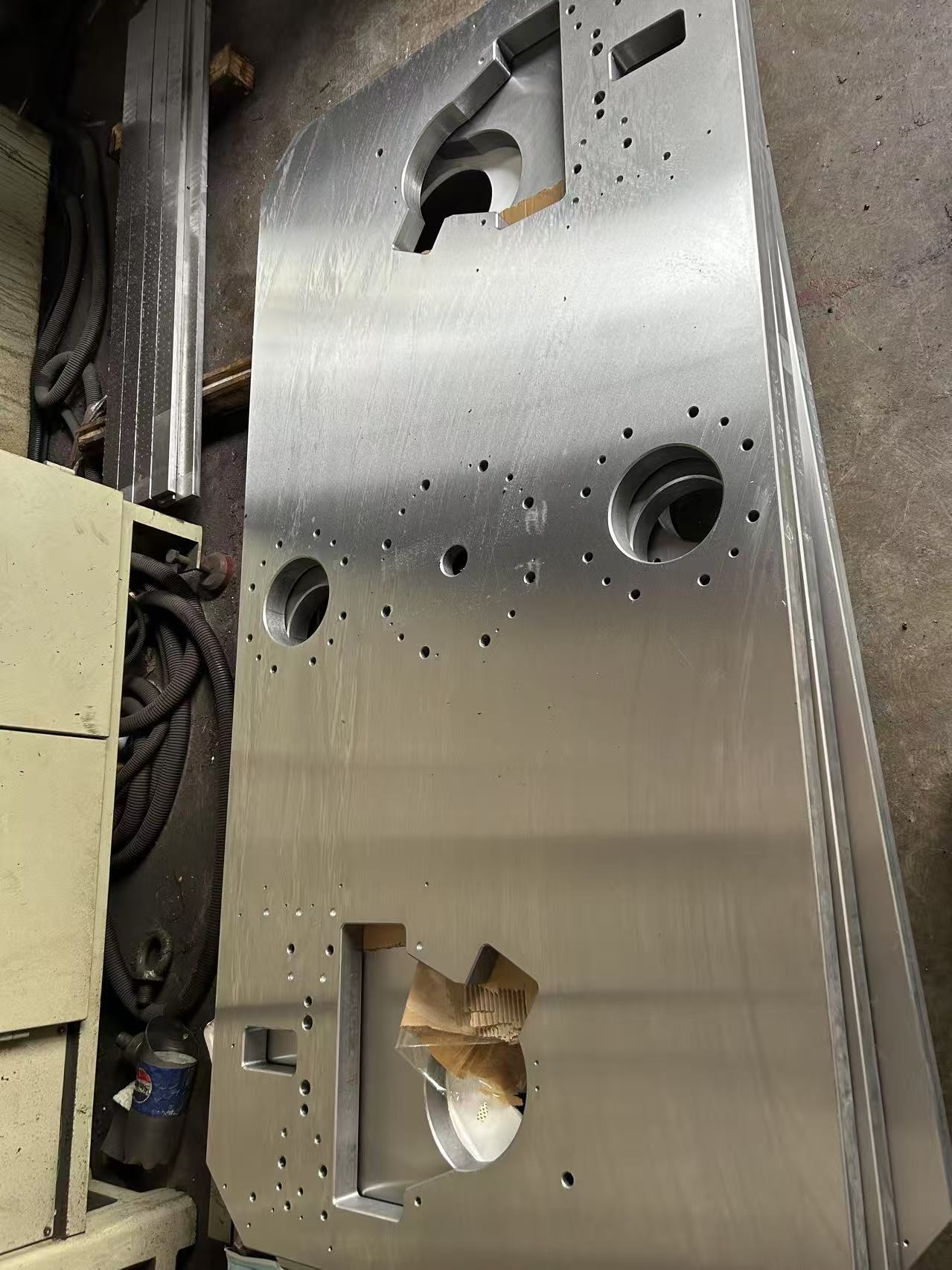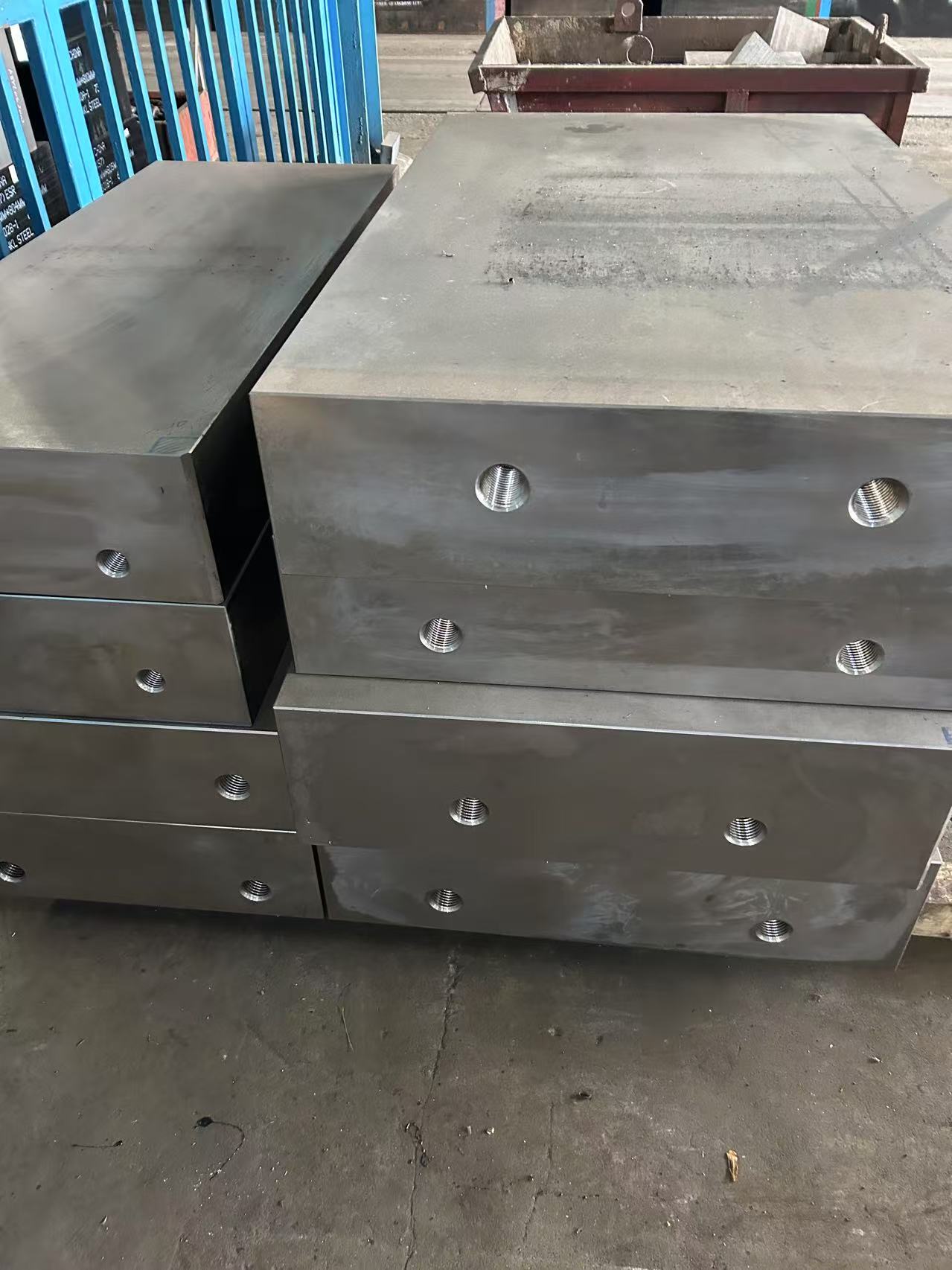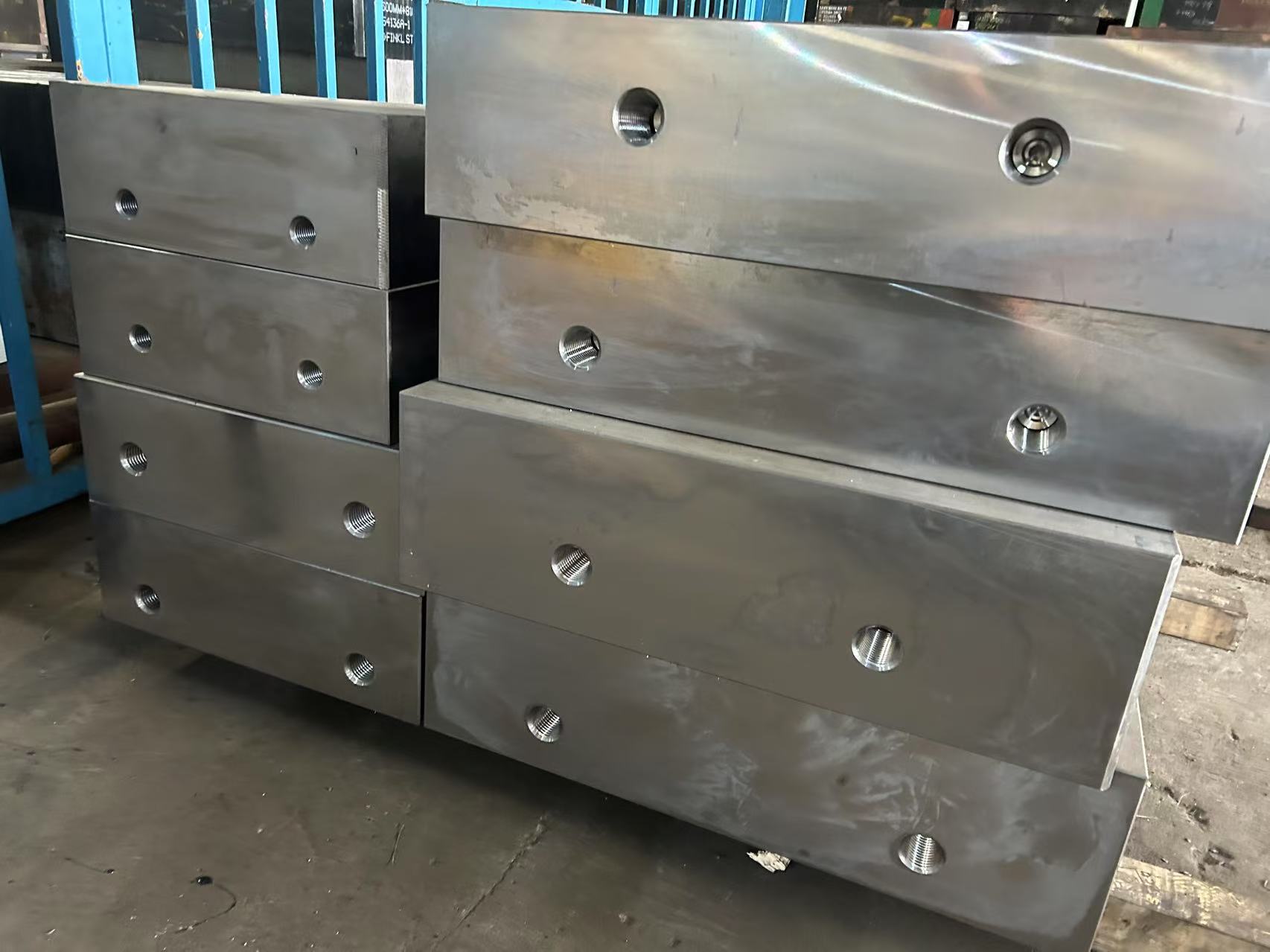Mould Parts(Mould Base Plates)
Mould base plates are the structural core of moulds. They’re usually made of steel, with different grades chosen according to the moulding application. For high – volume injection moulding of engineering plastics, P20 steel is often used because of its good machinability. In die – casting, H13 hot – work tool steel is preferred for its thermal fatigue resistance.
When choosing materials for mould base plates, factors like strength, corrosion resistance, and cost must be considered. Stainless steels are used in corrosive environments due to their excellent corrosion resistance.
Dimensional Precision
Accurate dimensions are crucial. Deviations in plate thickness, hole positions, or surface flatness can cause component misalignment, leading to defective products and mould damage.
Manufacturing Process
Mould base plates are made through precision machining, including cutting, milling, drilling, and grinding. CNC machines are used to guarantee high – precision results. After machining, surface treatments like quenching and plating enhance performance and extend lifespan.
Applications Across Industries
Mould base plates are used widely. In the automotive industry, they produce engine parts and body panels. In electronics, they’re used for device enclosures. The packaging industry relies on them for container manufacturing.








